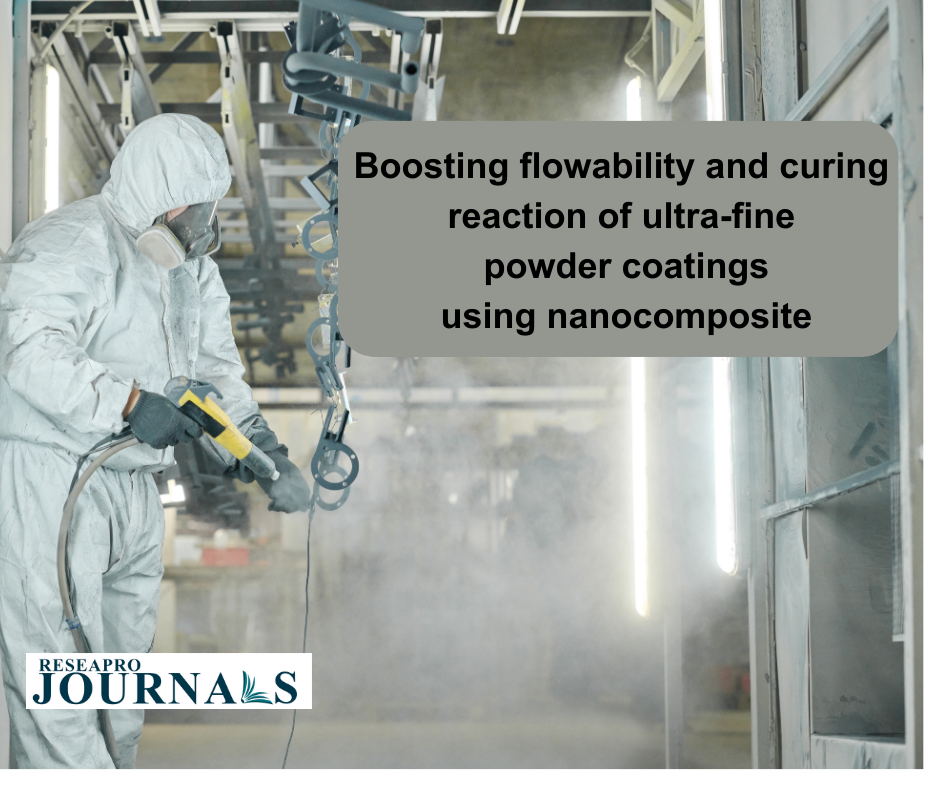In recent years, the widespread adoption of fiber-reinforced plastic (FRP) parts across industries has heightened the demand for eco-friendly and high-quality coatings. Ultra-fine powder coatings have emerged as a promising solution, offering a cost-effective and environmentally friendly alternative to traditional solvent paints. However, challenges such as low powder flowability and high curing temperatures hinder their application on FRPs. In response, a nanocomposite comprising [specific components] was developed and added to ultra-fine powder coatings. The study found that incorporating 0.3–0.5 wt% of the nanocomposite significantly improved powder flowability and enhanced curing reactions, reducing curing temperatures by 20 °C. This innovation resulted in a 50% reduction in film thickness and notable improvements in final appearance, roughness, and water resistance. The nanocomposite demonstrated its efficacy in enhancing flowability and curing reactions, presenting a breakthrough for obtaining thin, qualified films on FRP substrates and expanding the application of ultra-fine powder coatings in the coating industry.




